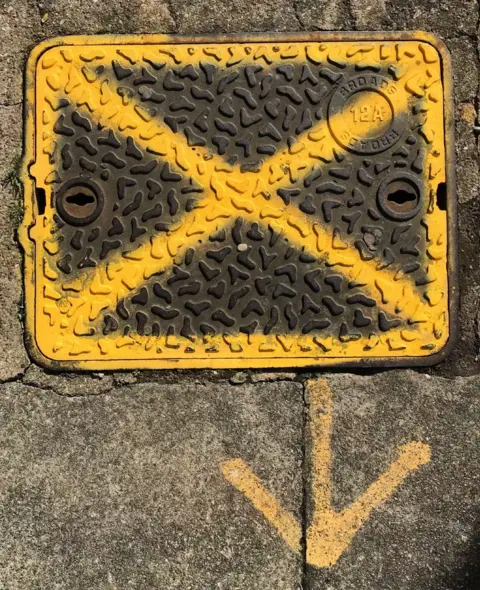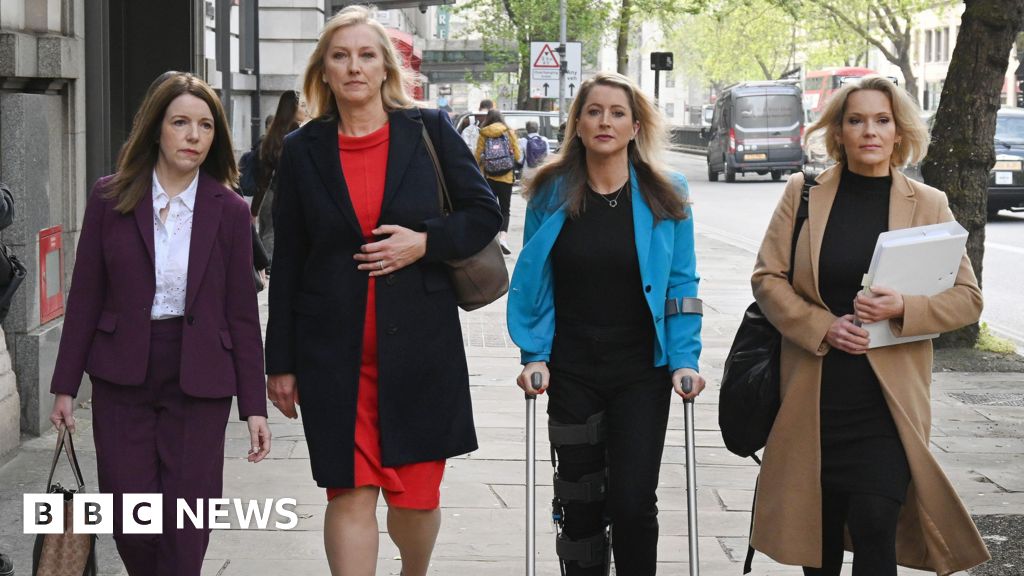Just now
By Russell Newlove, BBC News

 Jack Moyse
Jack Moyse
Joanne Coates is a farm labourer and her work influences her art
The brief is simple: follow the election and produce a piece of art. The resulting work will go to the Parliamentary Art Collection, the artist will get £20,000. There are just two rules - it must be politically balanced and it must reflect the entire geography of the UK.
For Joanne Coates, the official Election Artist for 2024, it's an opportunity to "tell this story of the election in parallel to what we see in the media", she says.
Until 4 July, the date of the election, she will travel alongside politicians – and the press - up and down the country, watching their campaigns up close.
Whereas journalists might focus on the story of the day and then quickly move on, an artist can "step back and look at things in a different way", she says.
According to Coates' website, her work explores themes of "rurality, hidden histories and inequalities relating to low income" and "power, identity, wealth and poverty" - subjects often coloured by political beliefs and ideologies. Would she struggle to remain politically balanced?
"It's a challenging aspect, but I relate it to being from the countryside and visiting the pub," she tells the BBC.
"In a country pub there are lots of different people from lots of different backgrounds with lots of different political views and because you're in a small place you have to get on with everybody, so it's something I'm used to in my everyday life."
"I'm not there to make a judgement," she notes. "The artwork will always be interpreted by an audience in different ways, but i think it's vital for this role to not bring a political viewpoint."
"It's a challenge but a really good one."
Coates is the seventh official election artist, chosen by the Speaker of the House of Commons' Advisory Committee on Works of Art, and is tasked with creating an artwork that will “inform and inspire future generations".
Previous artists have included sculptor Cornelia Parker, photographer Simon Roberts, and sketch artist Adam Dant.

 Jonathan Yeo
Jonathan Yeo
Proportional Representation sizes each leader’s portrait according to the share of the vote their party received
The first, in 2001, was portrait painter Jonathan Yeo, probably best known for his portrait of King Charles III, which he unveiled earlier this year.
The whole thing was a "wonderfully bonkers experience", he told me from his studio in west London.
"Tony Blair was refusing to sit for portraits, or at least his advisors didn't want him to do it."
So the Committee came up with an idea: why not have an election artist and make it portrait focused?
"An election is a bit like when two sides go to war," Yeo says, "and there's a long tradition of war artists documenting wars and to have an election artist doing the same job, but then with the secondary job of getting a portrait of the three main party leaders."
Getting enough time with Blair to sit for a portrait was difficult. The other party leaders, William Hague and Charles Kennedy, were game but, surrounded by advisors, Blair was kept at distance.
"I was usually kettled along with the journalists on the battle buses" Yeo says "or the photographers and the cartoonists."
Eventually, a plan was hatched. Yeo would wait in Blair's office at lunchtime and, when he returned, he'd have no choice but to sit for an initial portrait sketch.
"Blair comes in, and he's super charming, and I manage to do a few sketches and take a few photos, and after about two minutes, Alistair Campbell walks in and says 'Right, you've had your time, now... [go away]'."
The result was Proportional Representation; a punny triptych of portraits of the main party leaders, sized according to their share of the public vote.
"I placed Blair in the middle, Hague on the right and Kennedy on the left. At that time, Blair was quite centrist and in many ways, Lib Dem policies were to the left of Labour polices."
In 2005, he told a select committee the scheme should continue.
"I think there's a great potential to make this a tradition. I think there's a lot more story telling that can be done around it."
"It's the moment where politicians engage with the public, and it's that dialogue that an artist can interpret in an interesting way."
That engagement is perhaps most vividly represented by the piece produced for the 2019 election by Nicky Hirst.

 UK Parliament/Jessica Taylor
UK Parliament/Jessica Taylor
Nicky Hirst captured the general election in 2019
A dazzling, dangling mobile that hangs from the roof of Portcullis House, across the road from the Houses of Parliament. Made up of geometric shapes in bright primary colours, it follows a theme seen on her Instagram feed from her time following the election that year.
"I went everywhere by public transport and had conversations with people along the way," she says.
"People literally showing their colours became a thing. When people put those posters in their windows or the signs outside. It was that feeling of literally showing their colours that struck me.
"At the time I was looking for a sign."
Signs such as an X (as you might write on a ballot) or 10 (as in Downing Street) repeatedly feature in the electionartist2019 feed. Eventually, these would inspire her final piece.

 Nicky Hirst
Nicky Hirst
The number 10 repeatedly featured in Hirst's Election 2019 feed

 Nicky Hirst
Nicky Hirst
Signs such as an X also repeatedly featured, in reference to the ballot paper
"It's celebrating the process, and the right to have different opinions and to be conflicted, and to doubt and to make your own way through it."
It's too early to say what form Joanne Coates' final work will take, but as a photographer, she says it will definitely have some photographic element in it.
"Looking at the past artists' submissions, what was really nice was the possibilities and variety and that it's all accepted."
And while the election takes place on 4 July, she will have until September to produce her work. She'll have, as she says, "the joy of hindsight".
"In six weeks there might be stories we don't even remember. so the artwork really allows us to remember this moment in history in a different way."

 9 months ago
34
9 months ago
34









